
Intrahepatic cholangiocarcinoma (ICC) is the second most common primary liver cancer after hepatocellular carcinoma, accounting for approximately 10%-15% of primary liver cancer cases, and is rightly termed the “second-in-command” killer within the liver. Over the past 40 years, the incidence of ICC has been on the rise globally, particularly pronounced in Asia.
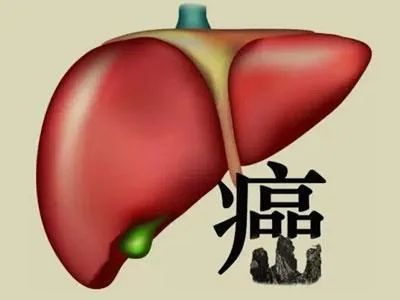
▲ Image source: Internet
ICC is highly malignant, and patients are often diagnosed at an advanced stage, which means that surgical resection is of limited effectiveness. However, surgical resection remains the primary treatment method for some early-stage ICC cases, with a postoperative recurrence rate as high as 60%-70% and a poor prognosis, with a 5-year survival rate of only 30%. Given these characteristics, exploring new treatment methods to provide better outcomes for patients is an unremitting pursuit for clinicians.
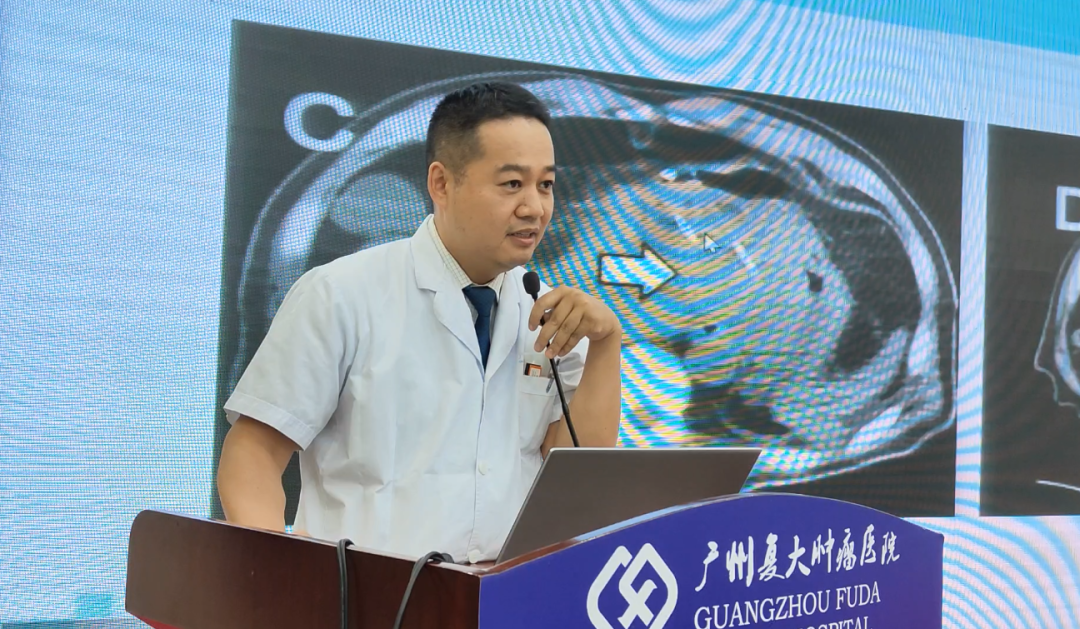
▲ Liu Shupeng, Deputy Director of the Department of Medical Oncology, shares relevant cases at the “Fuda New Horizons Xu Kecheng Lecture Hall”
Case SharingPatient Information
A 64-year-old male patient was admitted due to “progressive weight loss for over 3 months, diagnosed with intrahepatic cholangiocarcinoma one week ago.”
The patient previously experienced a decrease in appetite without obvious cause, accompanied by progressive weight loss. A CT scan at an external hospital indicated a liver mass, followed by a PET/CT scan and liver mass biopsy, which confirmed the diagnosis of intrahepatic cholangiocarcinoma.
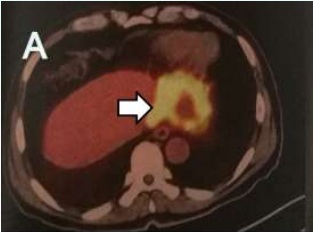
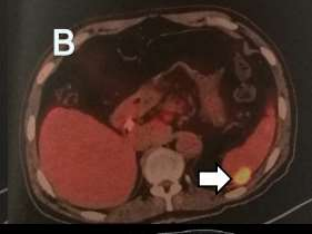 Imaging Examination
Imaging Examination
Upon admission, relevant examinations revealed that the liver lesion was adherent to the adjacent lesser curvature of the stomach and diaphragm, with unclear boundaries; the left branch of the portal vein and left hepatic vein were not visualized, suggesting invasion; localized thickening of the anterior and posterior peritoneum in the left upper abdomen was considered peritoneal metastatic tumors, with some lesions adhering to the adjacent left diaphragm and spleen, with unclear boundaries.
Additionally, tumor markers, especially CA19-9: 259.4 U/ml, CA125: 103.40 U/ml.
Expert Opinion
After thorough discussion, the expert team led by Deputy Director Liu Shupeng concluded that the patient’s tumor was located in the biliary tract, measuring approximately 7.4cm x 5.9cm x 6.2cm, and the nature of the tumor was confirmed as intrahepatic cholangiocarcinoma. After multidisciplinary consultation, it was considered that the tumor had invaded surrounding tissues and was accompanied by distant metastatic cancer, with no surgical resection indications. The experts opted for a treatment plan combining irreversible electroporation (IRE) and chemotherapy.
Treatment Process
Due to tumor invasion of the gastric wall, the patient took sodium phosphate for bowel cleansing one day before surgery, fasting and withholding water for 8 hours, and a gastric tube and urinary catheter were placed half an hour before surgery, with intravenous infusion of gemcitabine 1g one hour before surgery.
During the procedure, CT localization was performed, and puncture was guided by color ultrasound, with needles inserted through the abdomen and left chest wall. Two ablation needles were placed 2.5cm apart and parallel to each other, with the tips of the needles exposed 2cm, and ablation commenced. Due to the large size of the liver tumor, multiple ablations were performed to ensure complete coverage of the ablation area.
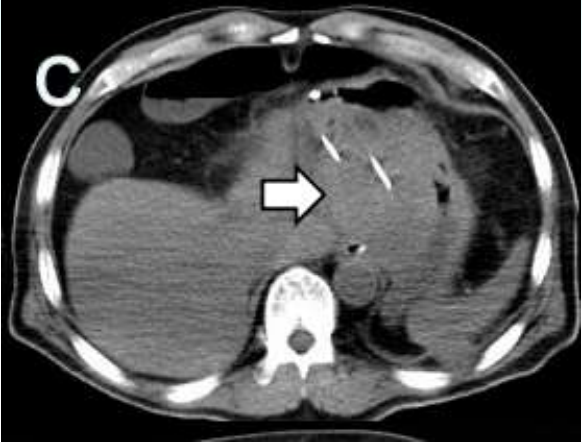
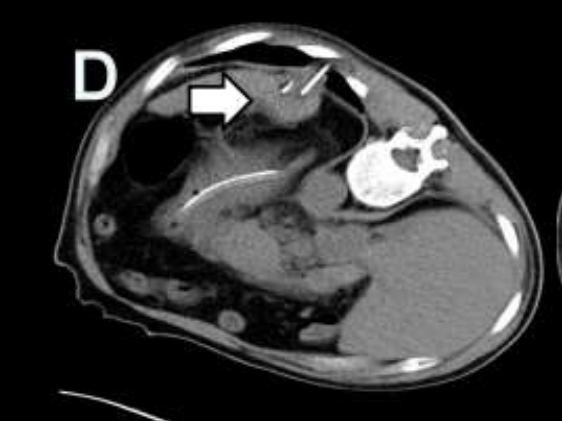 Intraoperative Procedure
Intraoperative Procedure
After postoperative gas and bowel movement, the patient began a liquid diet while taking tegafur capsules for treatment.
Follow-up Results
Follow-up abdominal CT scans one week and two months post-surgery indicated: large areas of low-density necrosis in the liver and left peritoneal tumors, with slight enhancement around the liver tumor. No significant abnormalities were noted in the electrocardiogram and myocardial enzymes, and tumor marker levels significantly decreased. The patient’s weight increased by 4kg compared to pre-surgery, and pain levels and daily activity capabilities improved significantly.
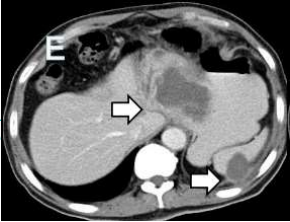
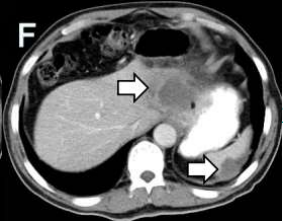 Postoperative Follow-up: Left is one week post-surgery, right is two months post-surgeryAbout Irreversible Electroporation
Postoperative Follow-up: Left is one week post-surgery, right is two months post-surgeryAbout Irreversible Electroporation
Irreversible electroporation (IRE) is a minimally invasive technique that destroys tumor cell membranes by generating a high-intensity electric field, causing minimal damage to surrounding healthy tissues, providing a new treatment option for ICC patients.
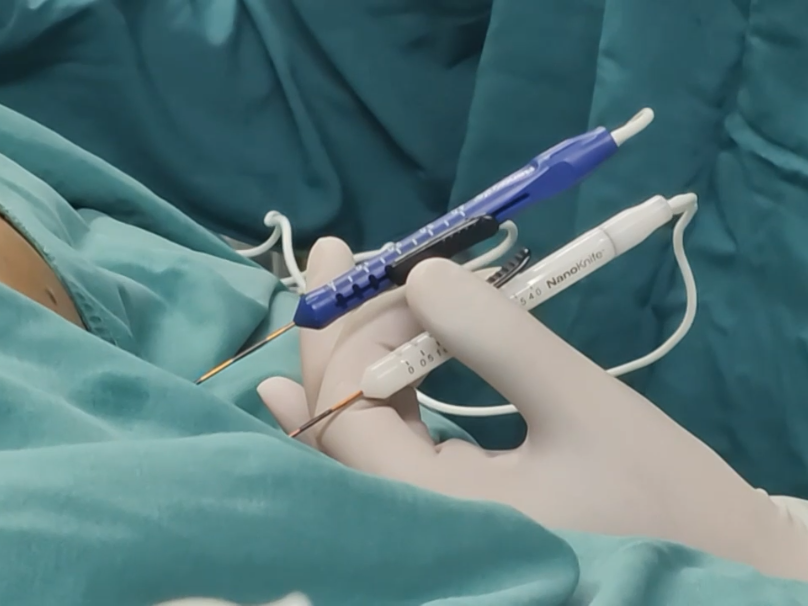
Electric Field Strength and Cell Membrane Perforation
The IRE technique generates a strong electric field by applying high-voltage pulses, leading to the formation of nanoscale pores in the cell membrane, which obstruct the exchange of substances inside and outside the cell, ultimately resulting in cell death.
 Tissue Selectivity and Safety
Tissue Selectivity and Safety
IRE has a high degree of tissue selectivity, primarily affecting cell membranes rather than surrounding structures such as blood vessels and nerves. Therefore, compared to traditional thermal ablation methods, IRE causes less damage to surrounding healthy tissues during treatment.
 Recovery Period and Complication Risks
Recovery Period and Complication Risks
Since IRE does not involve high temperatures, the recovery period is relatively short, and the risk of complications is low, making IRE a relatively safe treatment option, especially for tumors located near important structures such as blood vessels, bile ducts, pancreatic ducts, and ureters.

Furthermore, clinical practice has shown that compared to traditional chemotherapy, IRE combined with chemotherapy effectively improves treatment efficiency, reduces side effects, and increases tumor cell sensitivity to chemotherapeutic agents, providing better prognoses for patients.
However, it is worth noting that there is currently insufficient understanding of the long-term efficacy of IRE combined with chemotherapy and its impact on patients’ quality of life. More clinical research is still needed, focusing on how to improve surgical techniques and adjust drug use to reduce potential side effects during IRE combined chemotherapy, thereby enhancing treatment safety and patients’ quality of life.
Deputy Director of Medical Oncology, MDLiu Shupeng
-
Young Member of the Asian Society of Cryotherapy (ASC)
-
Member of the Oncology Diagnosis and Treatment Technology Transformation Committee of the Guangdong Medical Education Association
-
Standing Committee Member of the Lung Cancer Committee of the Guangdong Cancer Rehabilitation Society
-
Consultation Expert for the CACA Guidelines on Cancer Rehabilitation in China
With nearly 20 years of clinical work in comprehensive cancer treatment, possessing solid theoretical knowledge and rich clinical experience, especially unique insights into the diagnosis and treatment of common tumors such as liver cancer, pancreatic cancer, lung cancer, esophageal cancer, breast cancer, nasopharyngeal cancer, prostate cancer, and ovarian cancer. He has a high diagnostic and treatment capability for various difficult and complicated cases, and has profound expertise in minimally invasive tumor ablation treatments such as iodine particle implantation, cryoablation, microwave ablation, radiofrequency ablation, and nano-knife. He has published 10 papers in both Chinese and English in well-known domestic and international journals and participated in multiple provincial and municipal projects. He was the first to publish an article on cryoablation of pulmonary nodules in the journal of the North American Society of Interventional Radiology, which was cited in the “Expert Consensus on the Management of Subsolid Pulmonary Nodules” published by the American Association for Thoracic Surgery (AATS) in 2024.



 Follow UsFOLLOW US
Follow UsFOLLOW US
 Long press to recognize and follow the service number
Long press to recognize and follow the service number Long press to recognize and follow the subscription number
Long press to recognize and follow the subscription number
About the Hospital
National Clinical Key Specialty (Oncology)
International JCI Accredited Hospital
Chair Unit of the International Society of Cryotherapy
Founding Unit of the Asian Society of Cryotherapy
Asia-Pacific Cryotherapy Training Center
National Medical Insurance Network Settlement Point for Cross-Regional Medical Treatment
Guangzhou Medical Insurance Designated Unit
Guangdong Provincial Civilized Unit
National Trustworthy Private Hospital
Hospital Motto: Practice Medicine with Virtue, Mutual Assistance in Medical Ethics
Hospital Purpose: Promote Hospital with Technology, Establish Integrity, and Operate with Compassion
Hospital Vision: Build a Modern International Specialized Hospital
Address:
Tianhe Campus: No. 2 Tangde West Road, Tianhe District, Guangzhou
Haizhu Campus: No. 91 Juded Middle Road, Haizhu District, Guangzhou
Contact: 400-668-0120
Hospital Website: https://www.fudahospital.com/
Appointment Registration Method:
WeChat search for the public account “Guangzhou Fuda Cancer Hospital” → Registration/Payment → Appointment Registration